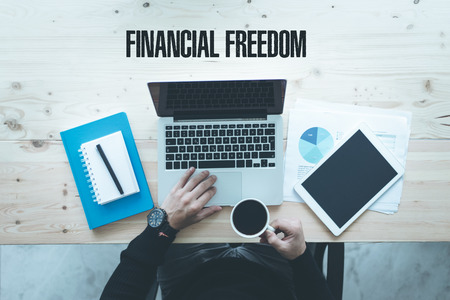1. Understanding How Personal Finance Apps Work
Personal finance apps have become an essential tool for managing money, tracking expenses, and planning budgets. These apps connect to your financial accounts and analyze your spending patterns to provide insights and recommendations. But how exactly do they work? Let’s break it down.
How Personal Finance Apps Connect to Your Accounts
Most personal finance apps link to your bank accounts, credit cards, and investment portfolios using secure connections. They typically use APIs (Application Programming Interfaces) provided by banks or third-party financial data aggregators like Plaid, Yodlee, or Finicity. These services allow the app to access transaction data without storing your actual banking credentials.
Key Features of Personal Finance Apps
These apps offer a range of features designed to help you manage your finances more effectively. Here are some of the most common ones:
| Feature | Description |
|---|---|
| Expense Tracking | Categorizes your transactions and helps monitor where your money is going. |
| Budgeting Tools | Allows you to set spending limits and track progress against financial goals. |
| Bill Reminders | Sends notifications about upcoming due dates for bills and subscriptions. |
| Investment Monitoring | Tracks stock portfolios, retirement accounts, and other investments in one place. |
| Credit Score Tracking | Provides updates on changes to your credit score and offers tips for improvement. |
| Financial Insights & Reports | Analyzes spending habits and suggests ways to save money. |
The Role of AI and Machine Learning in Personal Finance Apps
Many personal finance apps leverage artificial intelligence (AI) and machine learning to provide personalized recommendations. These technologies analyze past spending behaviors, predict future expenses, and suggest strategies to optimize savings. Some apps even offer automated saving features that transfer small amounts of money into savings accounts based on spending patterns.
Are These Apps Secure?
Security is a major concern when linking financial accounts to third-party apps. Most reputable personal finance apps use encryption protocols, multi-factor authentication (MFA), and other security measures to protect user data. However, users should always verify an apps security policies before connecting their financial information.
(1) Encryption Standards Used by Personal Finance Apps
The best personal finance apps use bank-level encryption (such as AES-256) to protect sensitive data during transmission and storage.
(2) Multi-Factor Authentication (MFA)
MFA adds an extra layer of security by requiring additional verification steps beyond just a password.
(3) Read-Only Access vs. Full Access
Most financial apps only have read-only access, meaning they can view transaction history but cannot initiate transfers or withdrawals.
(1) Should You Trust Personal Finance Apps with Your Data?
While these apps can be incredibly useful, users should carefully review privacy policies to understand how their data is used and shared.
(2) How to Choose a Secure App?
Look for apps that prioritize security features such as encryption, MFA, and transparent data-sharing policies.
By understanding how personal finance apps work, you can make informed decisions about which tools best suit your needs while keeping your financial information secure.
2. Common Security Risks with Finance Apps
Using personal finance apps can be convenient, but they also come with security risks. Cybercriminals are constantly looking for ways to exploit vulnerabilities in these apps to gain access to sensitive financial information. Below are some common security risks you should be aware of when using finance apps.
(1) Data Breaches
A data breach happens when hackers infiltrate a company’s database and steal sensitive user information. This can include bank account details, credit card numbers, and personal identification data. Even well-known financial apps have experienced breaches in the past, which puts users at risk of identity theft and financial fraud.
(2) Phishing Attacks
Phishing attacks involve cybercriminals tricking users into providing their login credentials or other sensitive information by pretending to be legitimate companies. This often happens through fake emails, messages, or even fraudulent app interfaces that mimic real finance apps.
(3) Unauthorized Access
If your finance app account is not properly secured, unauthorized users may gain access to your financial data. Weak passwords, lack of two-factor authentication (2FA), or malware on your device can make it easier for hackers to break into your account.
How These Risks Compare
| Security Risk | Potential Consequences | How to Protect Yourself |
|---|---|---|
| Data Breaches | Theft of personal and financial data | Use unique passwords and monitor account activity |
| Phishing Attacks | Unauthorized access to accounts and identity theft | Avoid clicking on suspicious links and verify sources |
| Unauthorized Access | Losing control over your finances and personal data | Enable 2FA and use strong passwords |

3. How Personal Finance Apps Protect Your Data
When it comes to managing your finances through apps, security is a top priority. Financial apps implement multiple layers of protection to ensure your personal and financial data remains safe from cyber threats. Here are some key security measures these apps use:
Encryption: Keeping Your Data Secure
Encryption is one of the most effective ways personal finance apps protect your information. It ensures that any data transmitted between your device and the app’s servers is unreadable to hackers.
(1) End-to-End Encryption
This method encrypts your data from the moment you enter it until it reaches its destination, making it nearly impossible for unauthorized users to access.
(2) Bank-Level Security
Many financial apps use the same encryption standards as banks (AES-256 encryption), providing an extra layer of protection for sensitive data like account numbers and passwords.
Multi-Factor Authentication (MFA)
MFA adds an additional layer of security by requiring more than just a password to log in. This helps prevent unauthorized access even if someone steals your login credentials.
(1) One-Time Passwords (OTP)
A unique code is sent to your phone or email that must be entered along with your password.
(2) Biometric Authentication
Some apps allow fingerprint or facial recognition login, ensuring only you can access your account.
Other Security Measures
Apart from encryption and MFA, financial apps also implement other protective measures:
| Security Measure | Description |
|---|---|
| Automatic Logout | Logs you out after a period of inactivity to prevent unauthorized access. |
| Fraud Monitoring | Detects unusual activity and alerts you immediately. |
| No Storing of Sensitive Data | Your full banking details are not stored locally on your device. |
| Secure API Connections | The app uses secure connections when linking with banks or financial institutions. |
The combination of these security measures makes personal finance apps a safe way to manage money. However, users should also take precautions like using strong passwords and keeping their apps updated for maximum protection.
4. Privacy Concerns: Who Has Access to Your Data?
When using personal finance apps, its important to understand who can access your financial data and how it may be used. Many apps collect and share user information with third parties, raising concerns about privacy and security.
How Personal Finance Apps Share Your Data
Most finance apps gather data such as transaction history, account balances, and spending habits. This data can be shared in different ways:
- With Third-Party Partners: Some apps share data with financial institutions or business partners to offer additional services.
- For Advertising Purposes: Your spending patterns might be analyzed to deliver targeted ads.
- To Improve App Features: Developers use aggregated user data to enhance app functionality.
The Role of Third-Party Access
Many personal finance apps integrate with third-party services like banks, credit agencies, and analytics firms. While this can improve the user experience, it also increases the risk of data exposure. Here’s a comparison of how different types of third parties may access your data:
| Third Party | Purpose | Potential Risk |
|---|---|---|
| Banks & Financial Institutions | Sync accounts and transactions | If not properly secured, unauthorized access could occur. |
| Advertising Networks | Targeted ads based on spending behavior | Your financial habits may be used for marketing without explicit consent. |
| Data Analytics Firms | User behavior analysis for app improvements | Anonymized data may still reveal personal spending patterns. |
(1) How Apps Monetize Your Data
Since many personal finance apps are free, they often generate revenue by sharing or selling user data. Some common monetization strategies include:
(1) Targeted Advertising
Your financial activity might be analyzed to show personalized ads within the app or on other platforms.
(2) Partnerships with Financial Services
Certain apps recommend credit cards, loans, or investment products based on your financial profile and earn commissions from referrals.
(3) Selling Aggregated Data
Anonymized user data may be sold to market research firms for trend analysis, though there is always a risk that anonymization isnt foolproof.
5. Best Practices to Keep Your Financial Information Safe
When using personal finance apps, security should be a top priority. While these apps offer convenience and valuable financial insights, they also store sensitive data that could be vulnerable if not properly protected. Here are some best practices to help keep your financial information secure.
(1) Use Strong and Unique Passwords
A strong password is the first line of defense against cyber threats. Avoid using common passwords like “123456” or “password.” Instead, create a complex password with a mix of uppercase letters, lowercase letters, numbers, and special characters.
Password Best Practices
| Do | Dont |
|---|---|
| Use at least 12-16 characters | Use easily guessable passwords (e.g., birthdate) |
| Create unique passwords for each account | Reuse passwords across multiple sites |
| Use a password manager for secure storage | Write passwords down on paper |
(2) Enable Two-Factor Authentication (2FA)
Two-factor authentication (2FA) adds an extra layer of security by requiring a second form of verification, such as a code sent to your phone or email. Enabling 2FA can significantly reduce the risk of unauthorized access.
(3) Regularly Review App Permissions
Many finance apps request access to various permissions, such as location or contact lists. Be mindful of what information youre sharing and regularly review app permissions in your device settings to limit unnecessary access.
(4) Keep Your App and Device Updated
Developers frequently release updates to fix security vulnerabilities. Make sure your personal finance app and mobile operating system are always up-to-date to protect against the latest threats.
(5) Monitor Your Accounts for Suspicious Activity
Regularly check your bank statements and transaction history for any unauthorized activity. If you notice anything unusual, report it immediately to your bank or financial institution.


